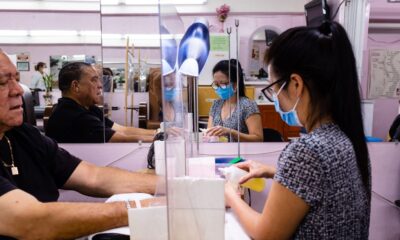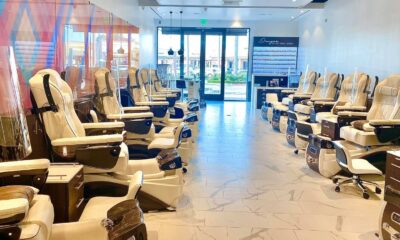Cosmetic surgeries have become increasingly popular in recent years, offering individuals the opportunity to enhance their physical appearance and boost their confidence. Embarking on the path to aesthetic enhancement through cosmetic surgery is a significant decision that warrants careful consideration. Two key factors that can make or break the success of your transformation are the choice of a cosmetic surgeon and knowing your options when it comes to anesthesia. Researching and selecting the right surgeon can be a transformative step toward achieving the desired results and ensuring a safe and satisfying surgical experience.
Before entrusting someone with your appearance, it’s essential to verify the credentials of potential cosmetic surgeons. Look for board certification, which signifies that the surgeon has undergone rigorous training and adheres to high professional standards. Additionally, check for memberships in reputable medical societies related to cosmetic or plastic surgery and check with the medical board for any citations, history of death, or any criminal records that the surgeon may have.
Different cosmetic surgeons have varying areas of expertise. Research surgeons who specialize in the specific procedure you’re considering. An experienced surgeon in a particular field is more likely to deliver optimal results and handle any potential complications with skill and confidence. Be aware of general surgeons advertising themselves as cosmetic surgeons. Schedule consultations with potential surgeons to discuss your goals, express concerns, and assess the surgeon’s communication style. Pay attention to how well the surgeon listens, explains procedures, and addresses your questions. A positive and open doctor-patient relationship is crucial for a successful cosmetic surgery journey. Ensure that the surgical facility where the procedure will take place is accredited. Accreditation indicates that the facility adheres to stringent safety and hygiene standards. Your safety during the surgical process is paramount, and choosing a well-equipped and accredited facility is a fundamental part of that commitment. Surgeries are only safe when performed by a surgeon at a surgery center. It would be unsafe or potentially cause the patient’s death if the surgery is performed at a medical office.
One other crucial decision lies in the choice of anesthesia—local or general. While local anesthesia may seem like a less invasive option and more affordable, it’s essential to understand the associated risks and why general anesthesia may be a safer choice for certain cosmetic surgeries.
Local anesthesia involves numbing a specific area of the body, rendering it insensitive to pain during a surgical procedure. For minor cosmetic interventions like injectables or minor facial enhancements, local anesthesia may seem like a convenient choice. However, the temptation of consciousness during a more extensive surgery may come with its own set of risks. Under local anesthesia, patients remain conscious during the procedure, potentially causing anxiety and discomfort. Watching a surgery in progress, even if pain-free, can be mentally distressing for some individuals. Local anesthesia may not provide adequate pain control for more invasive procedures. This could lead to discomfort or even pain during the surgery, impacting both the patient’s experience and the surgeon’s ability to perform optimally. Achieving complete anesthesia in a specific area can be challenging. Factors like individual pain tolerance, variations in anatomy, and unforeseen complications may result in inadequate numbing, leading to unexpected pain during the procedure.
In contrast, general anesthesia induces a state of unconsciousness, ensuring a painless and controlled environment allowing the patient to remain completely unaware and pain-free throughout the surgery. While it may seem like a more invasive option, general anesthesia offers several advantages that contribute to a safer and more controlled surgical environment. General anesthesia ensures the patient is entirely unconscious, eliminating any potential discomfort or psychological distress associated with being aware during surgery. This is particularly beneficial for complex and lengthy cosmetic procedures. With general anesthesia, pain management is more effective as it targets the entire body. This is crucial for minimizing post-operative pain and ensuring a smoother recovery process. Surgeons can perform cosmetic surgeries with greater precision and focus when the patient is under general anesthesia. This is especially important for intricate procedures that require meticulous attention to detail.
If the surgery is performed at a surgery center, the specialized team of anesthesiologists, nurses and surgical technicians will have the authority to force the surgeon to immediately stop the surgery if the surgeon becomes negligent or left out an important step. But if this surgery is performed in the surgeon’s medical office under local anesthesia, no one will have the authority to stop the surgeon from performing the surgery. Simply put, when performing surgery under local anesthesia, the surgeon will perform and make all the decisions without the opinions and professional witnesses of the team of anesthesiologists, nursing staff, surgical technicians.
Embarking on a cosmetic surgery journey is a personal and transformative experience, and choosing the right surgeon is a critical step in ensuring a positive outcome. By investing time in thorough research, checking credentials, reading reviews, and attending consultations, you empower yourself with the knowledge needed to make an informed decision. The right cosmetic surgeon will not only possess the technical skills required for your chosen procedure but also share a commitment to your safety, well-being, and overall satisfaction.
While local anesthesia may seem like an appealing option for its perceived simplicity and lower cost, the risks associated with inadequate pain control, patient discomfort, and the potential for incomplete anesthesia cannot be ignored. General anesthesia, on the other hand, offers a more comprehensive approach, ensuring patients are completely unconscious, and pain-free, allowing surgeons the precision required for intricate cosmetic procedures.
Ultimately, the choice between local and general anesthesia depends on the type and complexity of the cosmetic surgery. It is crucial for patients to engage in open and thorough discussions with their surgeons to determine the most appropriate anesthesia option, taking into account both the nature of the procedure and individual health considerations. Prioritizing safety and comfort will contribute to a positive cosmetic surgery experience and a smoother recovery journey.
Remember, your aesthetic journey is unique, and selecting a surgeon who aligns with your goals is key to achieving the confidence and satisfaction you desire.

 Politics3 years ago
Politics3 years ago
 Business2 years ago
Business2 years ago
 Business3 years ago
Business3 years ago
 Business3 years ago
Business3 years ago
 Business3 years ago
Business3 years ago
 Business4 years ago
Business4 years ago
 Business3 years ago
Business3 years ago
 Health3 years ago
Health3 years ago














